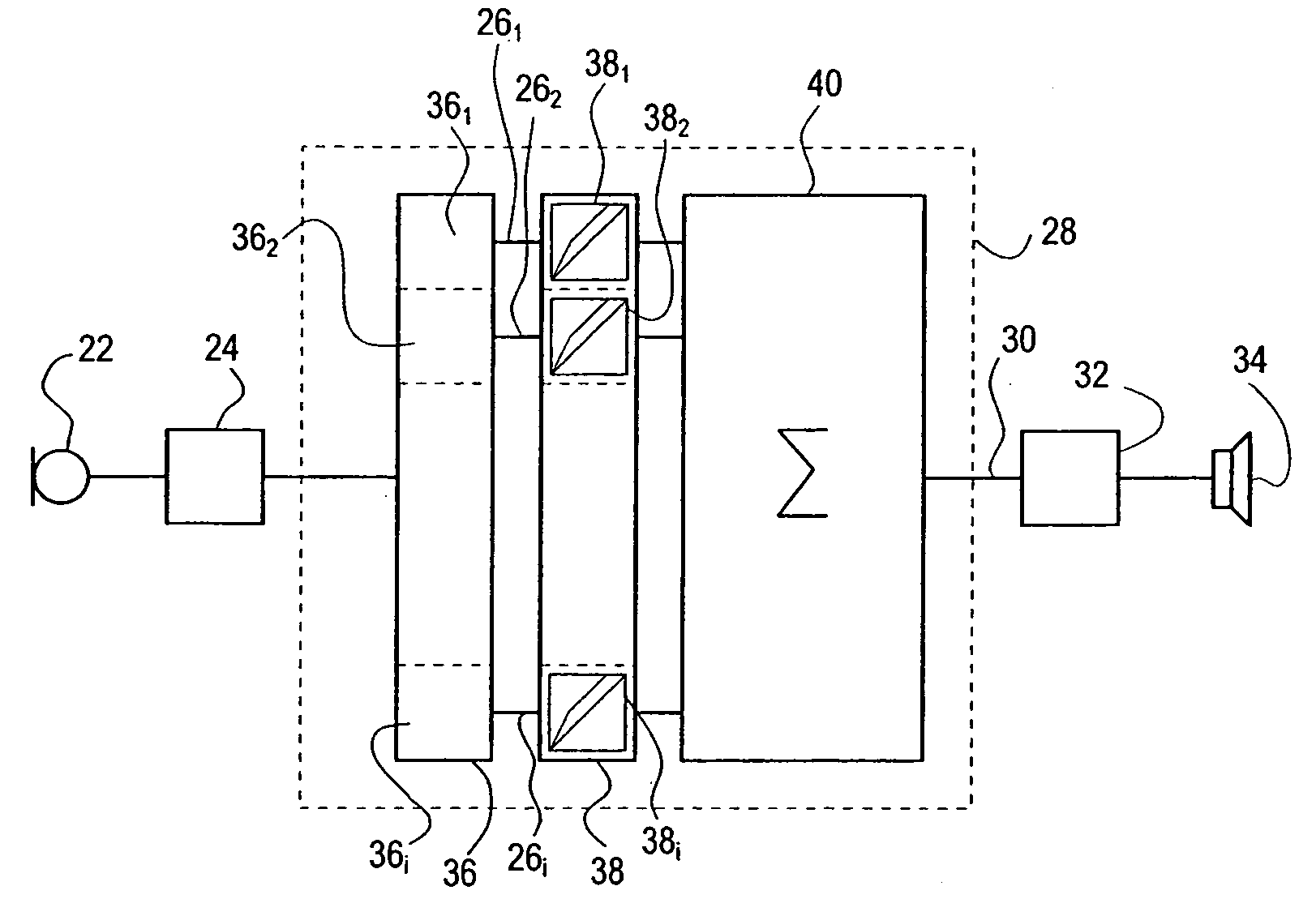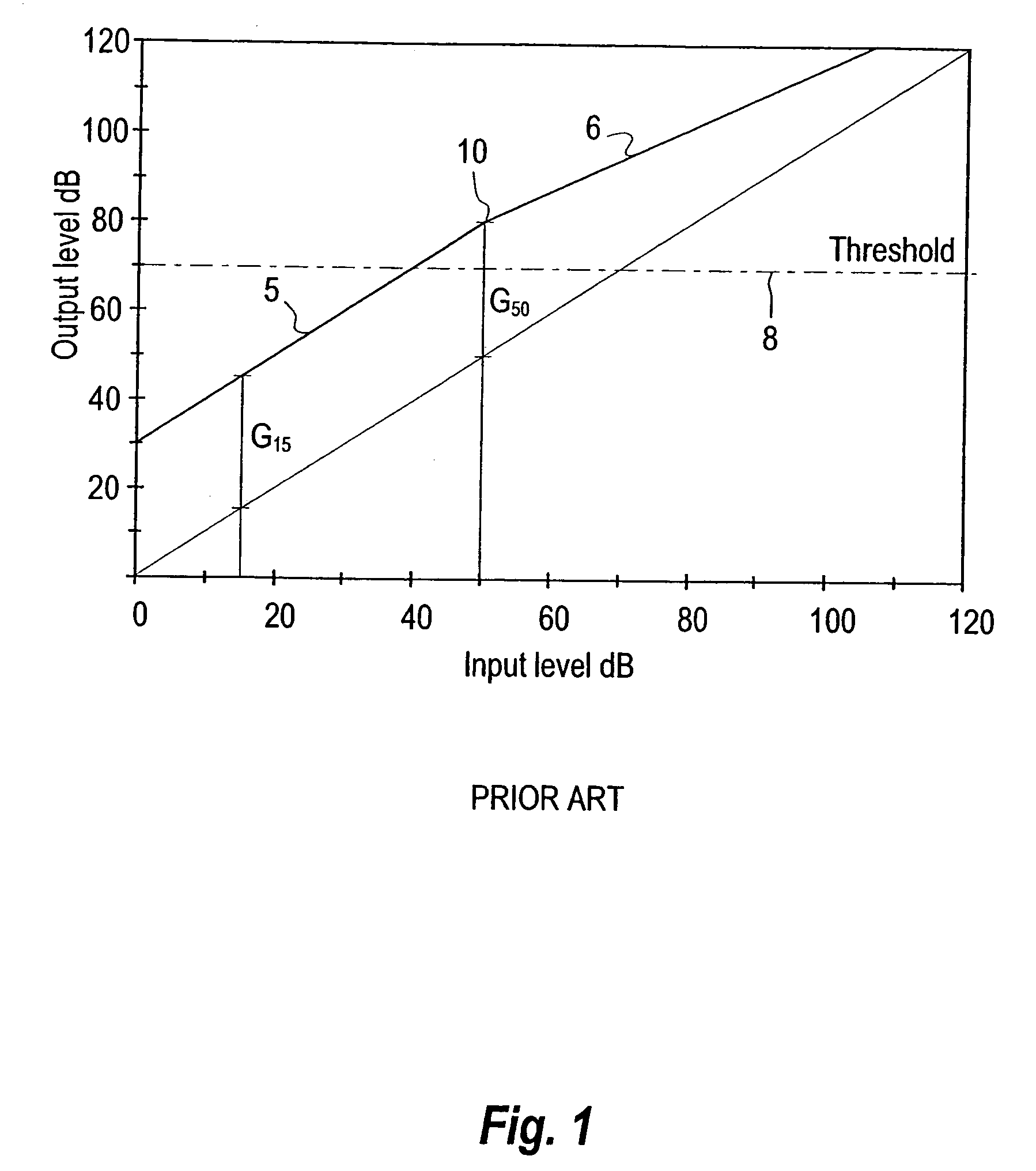Hearing aid with sudden sound alert
a hearing aid and alert technology, applied in the direction of transducer casings/cabinets/supports, electrical transducers, translation techniques, etc., can solve the problems of hearing aid users being bothered by other sounds, and achieve the effect of lowering the output signal high gain of the hearing aid, and reducing the gain
- Summary
- Abstract
- Description
- Claims
- Application Information
AI Technical Summary
Benefits of technology
Problems solved by technology
Method used
Image
Examples
Embodiment Construction
[0026]FIG. 1 shows a plot of a prior art compressor characteristic, i.e. a plot of the compressor output level as a function of the input level, both in SPL. This characteristic may be for a general compressor or it may be for one among a bank of narrow-band compressors in a hearing aid signal processor. The particular characteristic may depend on the fitting to a particular user. The example in the figure assumes the hearing aid has been tuned to compensate a particular hearing deficiency, as partially illustrated by the hearing threshold line at 70 dB. The fitting to other users may be suggested by those skilled in the art of hearing aid fitting.
[0027]The characteristic comprises two linear segments 5, 6, which are interconnected at a knee-point 10 (CT—Compression Threshold) typically positioned at 50 dB SPL input level. At sound levels below the knee point 10, as evidenced by the linear segment 5, there is substantially no compression, i.e. the gain is a constant gain, suitable f...
PUM
 Login to View More
Login to View More Abstract
Description
Claims
Application Information
 Login to View More
Login to View More - R&D
- Intellectual Property
- Life Sciences
- Materials
- Tech Scout
- Unparalleled Data Quality
- Higher Quality Content
- 60% Fewer Hallucinations
Browse by: Latest US Patents, China's latest patents, Technical Efficacy Thesaurus, Application Domain, Technology Topic, Popular Technical Reports.
© 2025 PatSnap. All rights reserved.Legal|Privacy policy|Modern Slavery Act Transparency Statement|Sitemap|About US| Contact US: help@patsnap.com



